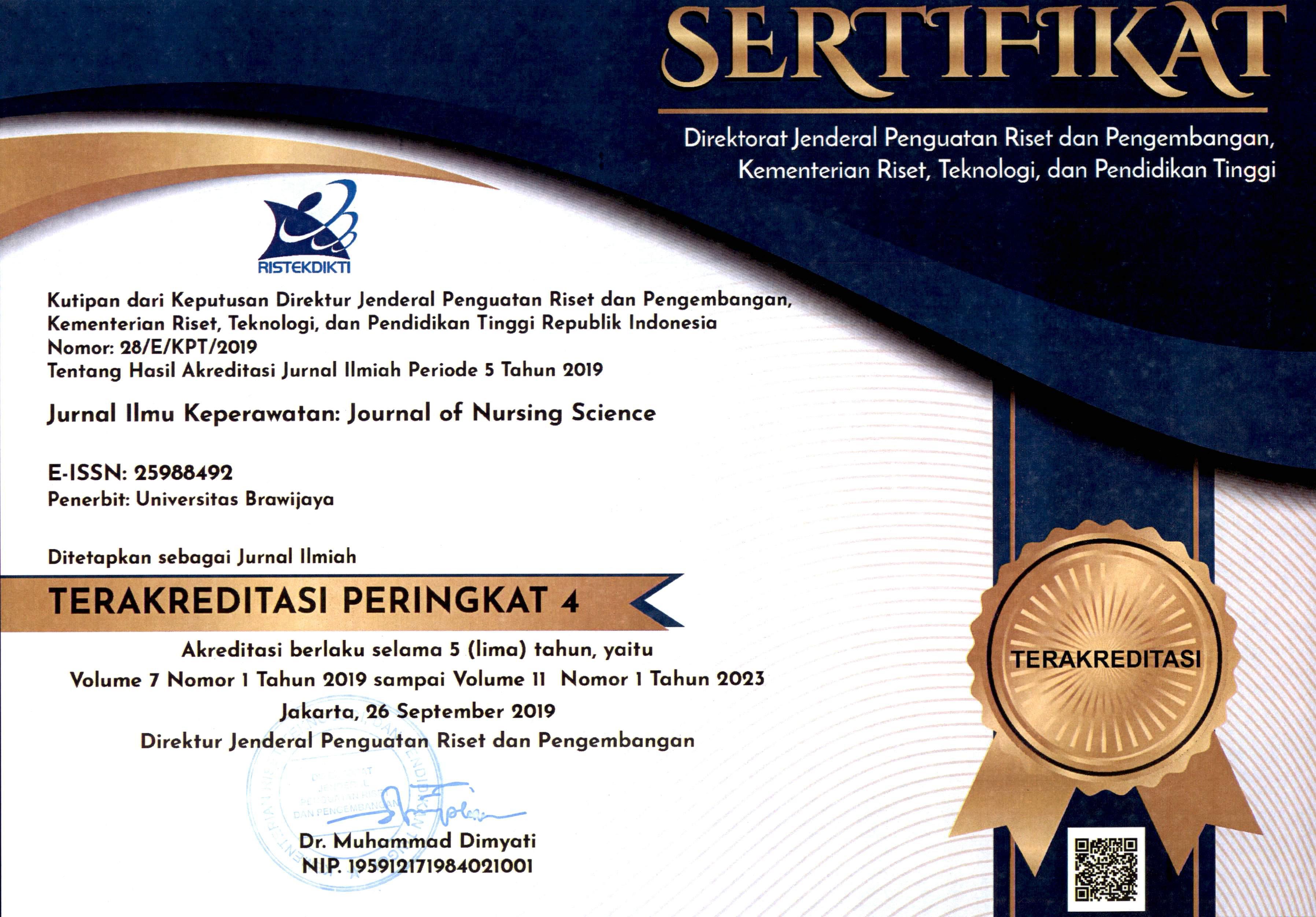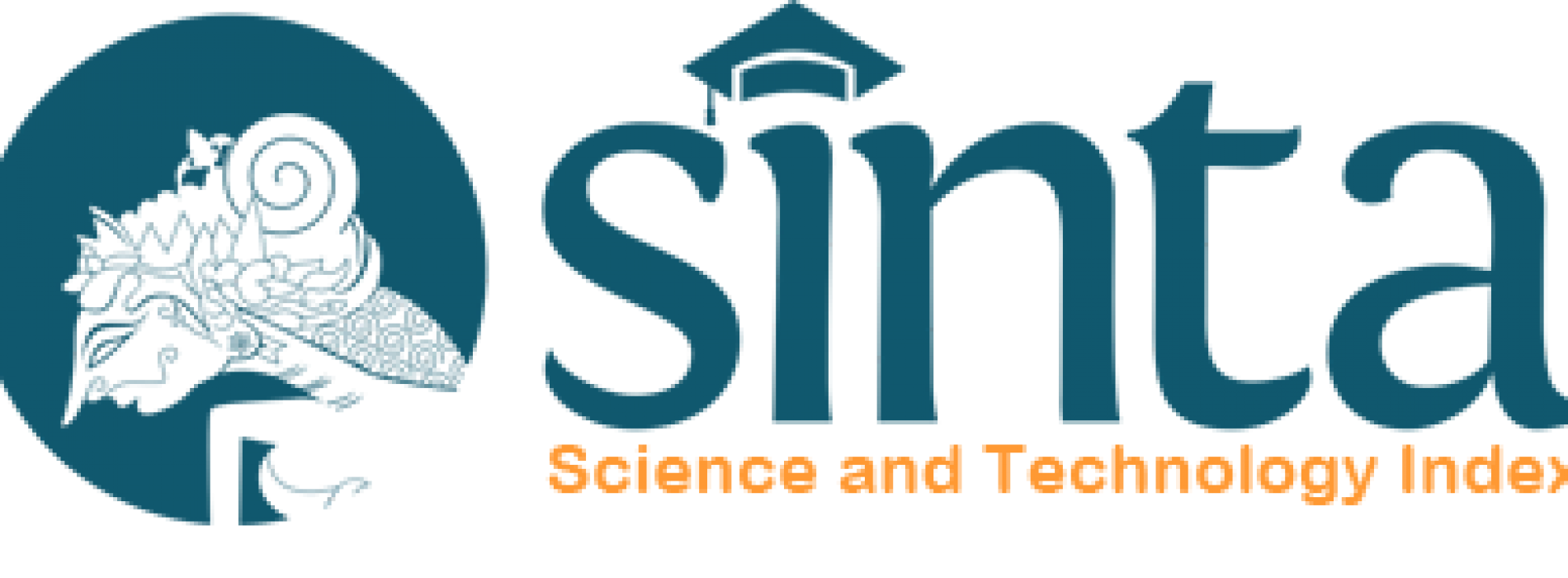The Correlation Between Personality Type of Disc (Dominance, Influence, Steadiness, and Compliance) Models and Burnout the Nurses at Puskesmas in Jembrana Regency, Bali
DOI:
https://doi.org/10.21776/ub.jik.2021.009.01.5Keywords:
Burnout, PHC, DISC, PersonalityAbstract
References
- Afidah, N. dan A. Pratiwi. (2015). Hubungan antara tipe kepribadian dengan kinerja perawat di rumah sakit pku muhammadiyah surakarta. Repository Fakultas Ilmu Kesehatan Universitas Muhammadiyah Surakarta. 196–205.
- Atia, Y. S. D. dan C. H. Soetjiningsih. (2020). Burnout dan kaitannya dengan tipe kepribadian introvert. Psycho Idea. 18(1):8–15.
- Bakker A.B., Killmer C.H., Siegrist J., dan Schaufeli W.B. (2000). Effort-reward imbalance and burnout among nurses. Journal of Advanced Nursing. 31(4):884–891.
- Ecie, M. T. (2013). Relationships Among Nursing Burnout, the Big Five Personality Factors, and Overall Self-Concept: The Impact of Assessing Common Method Variance. The University of Tennessee at Chattanooga.
- Felton, J. S. (1998). Burnout as a clinical entity - its importance in health care workers. Occupational Medicine. 48(4):237–250.
- Freudenberger, H. J. (1974). Staff burn-out. Journal of Social Issues. 30(1):159–165.
- Harnida, H. (2015). Hubungan efikasi diri dan dukungan sosial dengan burnout pada perawat. Persona:Jurnal Psikologi Indonesia. 4(1):31–43.
- Haryati, O. dan A. Nurhasanah. (2013). Penggunaan metode disc dalam menilai kesesuaian gaya kepribadian kepala ruangan dengan tuntutan jabatan. Jurnal Keperawatan. 1(1):89–101.
- Kemenkes RI. (2017). Infodatin Pusat Data Dan Informasi Kementrian Kesehatan RI 12 Mei Situasi Tenaga Keperawatan Indonesia. Jakarta Selatan: Kementrian Kesehatan RI Pusdatin.
- Maslach, C. (2003). Burnout The Cost of Caring. Los Altos: ISHK. ISHK.
- Maslach, C. dan S. E. Jackson. (1982). The measurement of experienced burnout. Journal of Occupational Behaviour. 2(10):99–113.
- Maslach, C., W. B. Schaufeli, dan M. P. Leiter. (2001). Job burnout. Annu. Rev. Psychol. 52:397–422.
- Mufida, S. (2012). Perbedaan burn out ditinjau dari gaya kepribadian dominance, influence, steadiness, dan compliance. Journal of Social and Industrial Psychology. 1(1):47–55.
- Nuratmi, Y. (2014). Hubungan Beban Kerja Dengan Tingkat Stres Kerja Perawat Di Ruang ICU, IGD Dan IBS Rumah Sakit Sari Mulia Banjarmasin. SEKOLAH TINGGI ILMU KESEHATAN SARI MULIA BANJARMASIN.
- Nursalam. (2015). Metodologi Penelitian Ilmu Keperawatan Pendekatan Praktis. Edisi 4. Jakarta Selatan: Penerbit Salemba Medika.
- Permana, M. Z. (2017). Panduan Praktis Personality Assessment. Edisi 1. Jakarta: Penerbit Raih Asa Sukses.
- Poncet, M. C., P. Toullic, L. Papazian, N. Kentish-Barnes, J. F. Timsit, F. Pochard, S. Chevret, B. Schlemmer, dan É. Azoulay. (2007). Burnout syndrome in critical care nursing staff. American Journal of Respiratory and Critical Care Medicine. 175(7):698–704.
- Prihartin, E. (2019). Hubungan Antara Karakteristik Kepribadian Perawat Dan Motivasi Perawat Di Instalasi Rawat Inap Rumah Sakit Haji Jakarta. Universitas Indonesia.
- Sasanti, S. D. dan Z. Shaluhiyah. (2016). Personality berpengaruh terhadap terjadinya stress kerja perawat di ruang rawat inap rumah sakit umum kota salatiga. Jurnal Promosi Kesehatan Indonesia. 11(1):66.
- Shin, E. (2017). The DISC Codes. Edisi 5. Jakarta: PT. Alfa Cemerlang Edindo.
Downloads
Published
How to Cite
License
Authors published in this journal agree to the following terms:
1. The copyright of the received article shall be assigned to the journal as the publisher of the journal. The intended copyright includes the right to publish the article in various forms (including reprints). The journal maintains the publishing rights to the published articles.
2. Authors may enter into separate additional contractual agreements for the non-exclusive distribution of the published journal version of the work (for example, posting it to an institutional repository or publishing it in a book), with acknowledgment of their initial publication in this journal.
3. Authors are permitted and encouraged to post their work online (e.g. in an Institutional Repository or on their website) before and during the submission process, as this can result in a productive exchange, as well as earlier and larger citations of the published work.
4. Articles and all related material published are distributed under Creative Commons Attribution-NonCommercial 4.0 International License or CC BY-NC 4.0 license.
JNSU is licensed under a Creative Commons Attribution-NonCommercial 4.0 International License or CC BY-NC 4.0 license.
Most read articles by the same author(s)
- Erti Ikhtiarini Dewi, Enggal Hadi Kurniyawan, Afrize Rosalia, CORRELATION BETWEEN LOCUS OF CONTROL WITH STRESS CARE OF NURSES IN HOSPITAL AT SOEBANDI HOSPITAL JEMBER , Journal of Nursing Science Update (JNSU): Vol. 8 No. 2 (2020)






























